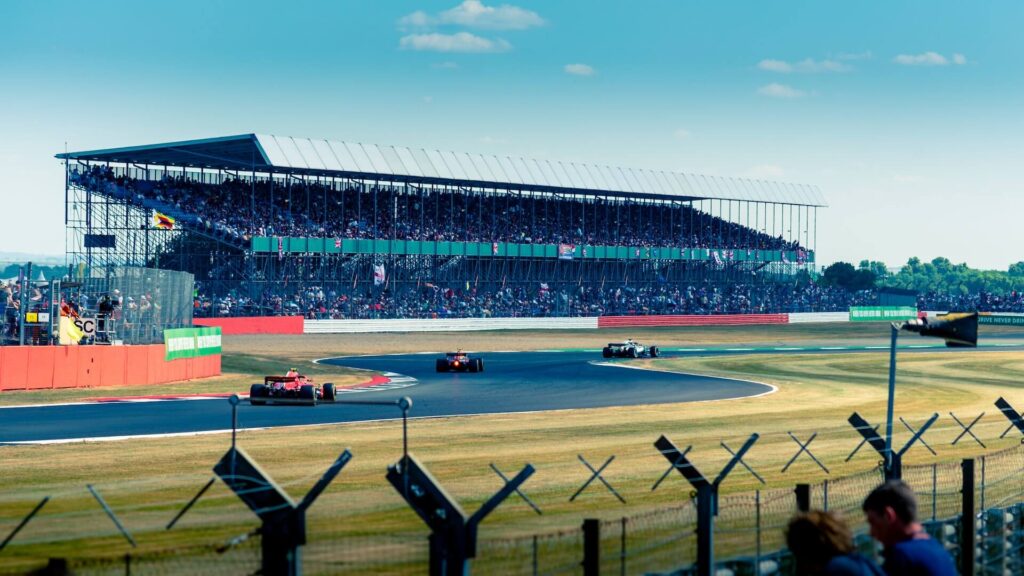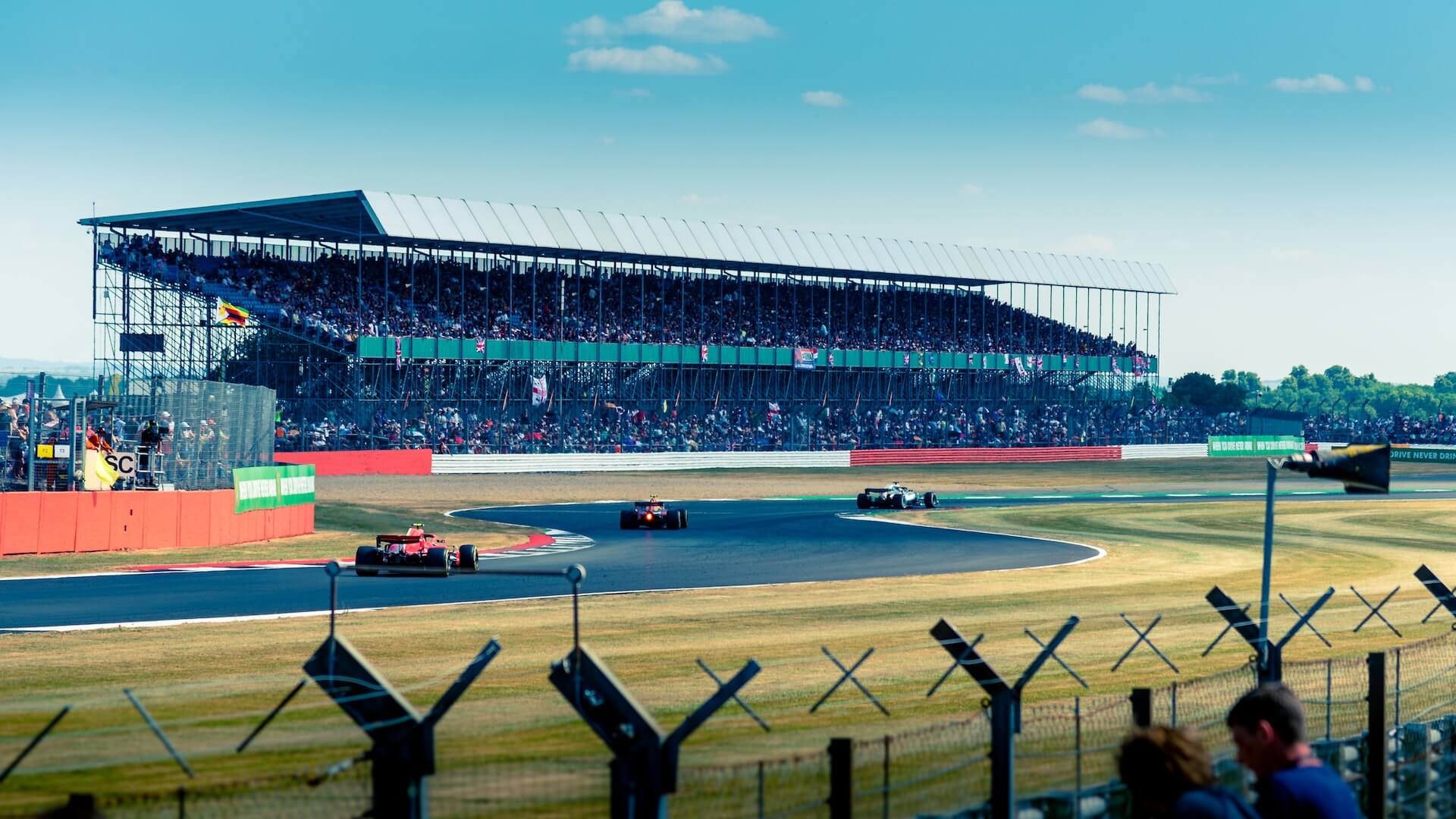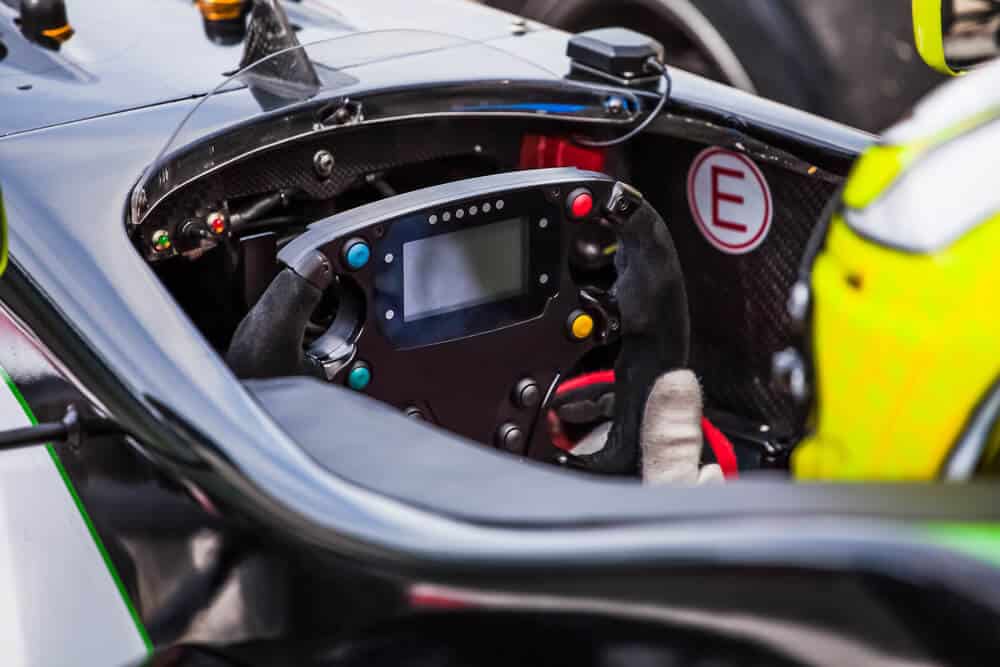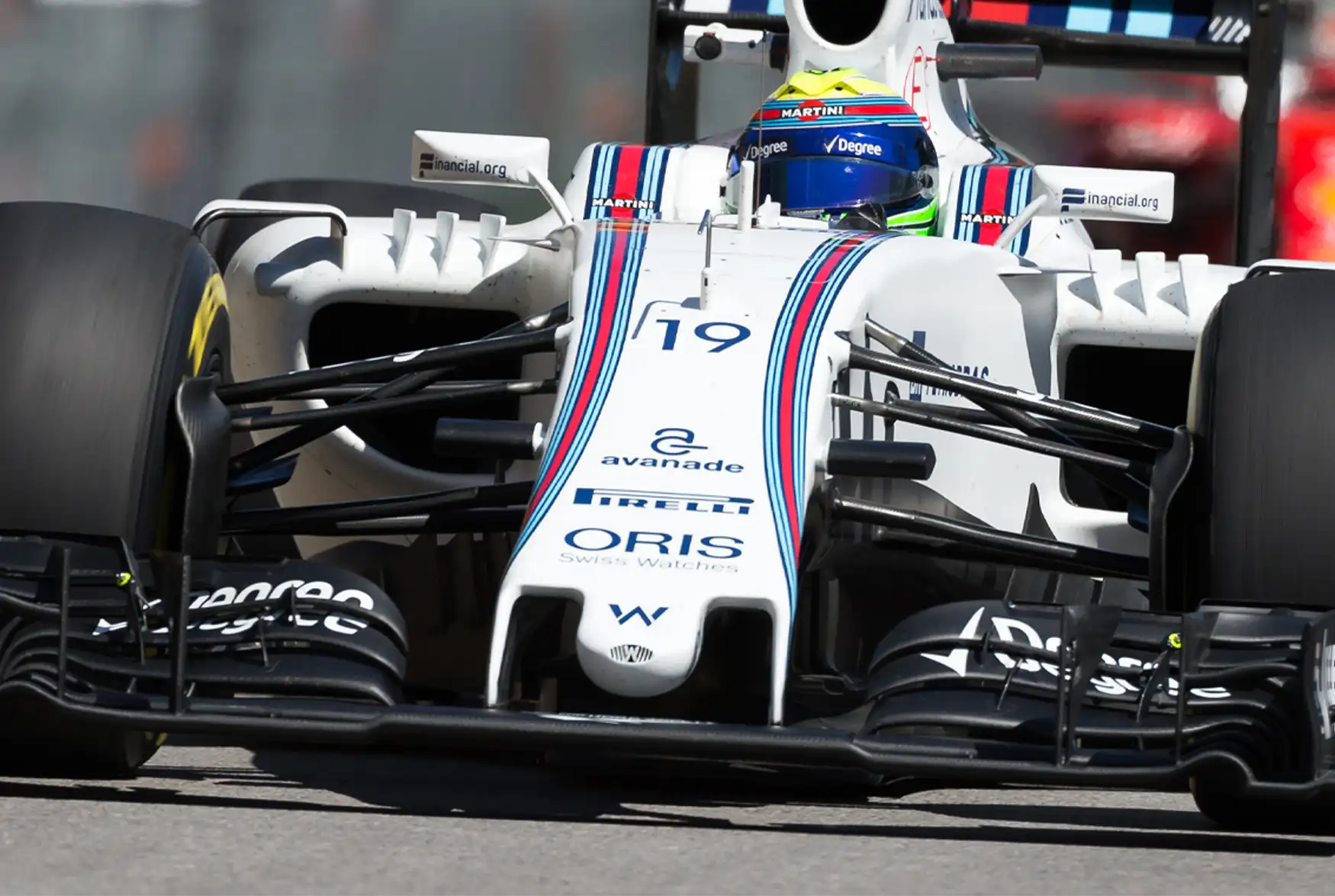F1 races take place on Sundays. However, every Formula One fan knows that half of the excitement and drama of the F1 race happens on the day of the qualification. The qualifying day is the day when the drivers qualify for the positions at the grid that they will take on the next day. Formula One drivers fight and strive to qualify, trying their best to get pole positions.
However, for a newbie watching a qualifying race, the rules and regulations can be very difficult for him to understand. This is why, in this article, we will be discussing all that’s about qualifications, the day of qualifying, and much more.
Table of Contents
Watch this video to learn more about qualification in Formula 1.
F1 qualifying explained
A true Formula One fan knows that the real aggression and the tension of the F1 race take place on the day of qualifying. It is on this day that drivers have to show their full potential so that they can get selected for the race happening on the very next day with the best possible position.
The race on the day of qualifying is one hour in total. It is further divided into three periods as described below:
- Q1
– 18 minutes long.
– 5 slowest drivers gets eliminated. - Q2
– 15 minutes long.
– 5 slowest drivers gets eliminated. - Q3
– 12 minutes long.
– Fastest driver gets pole position.
– The starting grid is set, where the fastest of the drivers is selected to get the forefront positions in the race.
Key takeaways
- The qualifying session is the race during the weekend of the Grand Prix event where the competitive and eligible cars have a shot at trying to get the leading positions in the main race.
- The qualifying session is divided into three parts, Q1, Q2, and Q3.
- The driver with the fastest time lap will get the pole position.
- Other drivers will be allotted positions according to their time-lapse, with the fastest drivers getting positions in the front of the race.
- A sprint session was introduced in 2021 to further spice up the f1 event.
- The positions scored in the sprint session will determine the position of the driver in the main Grand Prix event.

Understanding qualifications in F1
The day of qualifications for an F1 is the day on which one could expect many controversies and drama from the drivers. The reason for this is that the drivers have to qualify themselves for the upcoming race with the best leading positions possible. Hell would break loose if a driver gets blocked by another driver during the qualifying sessions. This would be accompanied by heated arguments if the driver gets blocked by one of his team members.
All in all, qualifications are as interesting and nerve-racking to watch as the final race on Sunday.
There have been many variations in the rules for the qualifications for the F1 race. Before 1996, there used to be two one-hour race sessions, one on Friday and the other on Saturday, where the driver with the fastest time lap in both the sessions used to qualify for their positions on the grid. However, this system was quite boring to watch and gave a very predictable result to the viewers.
In 1996, there came another major change in the rules for qualifications. The two-hour session was changed to a one-hour session on Saturday. The drivers had a limit of twelve time-laps with no restrictions on the change of tires and loading of fuels.
However, this change had a drawback in itself, as teams used to wait in garages so that the other cars on the track could shed rubber from their tires which would further improve the conditions of the track. This is why the best time laps were set toward the end of the session which was not great for the viewers watching the game from their homes.
It was in 2006 that the first module of the current knockout system of the qualifying rounds was introduced. However, this system had a drawback as the Q3 session was hindered by the fuel load of the car. Thanks to the adjustments made in 2010, the cars’ performance was not dependent on the refueling load, but instead on their tires.
Then in 2021, came a new format which was implemented in 2022. This format involves the team members and is called the sprint race. It is spread over two days, with two qualifying sessions taking place on Fridays, and the last qualifying session taking place on a Saturday morning. The final qualifying sprint takes place later that afternoon.
In laps and out laps
During the Q1, Q2, and Q3 sessions of the qualifying rounds, each driver tries his best to set the fastest time lap possible, because this will determine their position on the grid on the day of the final race. Each qualifying lap consists of three full laps on the track.
The first lap is the out lap which is done by the driver as the pit is parallel to the starting line. The drivers start at a slow pace, increasing their speed during the out lap. This helps them to warm up their car’s tires and brakes so that they can reach the optimum temperature for working as efficiently as possible.
The second lap is the timed lap, where the driver tries his best to take corners as close as possible. The driver deliberately hits the apex at every corner and pushes his brakes as late as possible. By doing this, the driver will have his final shot to the finish line where his timer is set.
The last of these three laps is the in-lap. An in-lap is the full lap that the driver takes when he is driving back into the pit. The pace of the cars during this lap is slowed down to cool the cars down and to take some time before their timed lap stops.
At the end of every session, a flag is waved which marks the end of the session. If the driver passes the finish line before this flag is waved he can do another lap, even if the timer has stopped. However, those drivers that haven’t reached the finish line need to make it there as soon as possible with their fastest time.
F1 qualifications rules
The qualifying session is divided into three sessions, Q1, Q2, and Q3, the details of which are discussed further in the article. The time laps scored in this round determine the position of the driver on the grid at the sprint event.
107% rule
In the 1970s and 1980s, the number of cars that entered the f1 races was more than the defined limit of twenty-six. This is why the twenty-six fastest cars from the many numbers of entrants were chosen for the qualifying.
However, by the 1990s, the number of f1 entrants had reduced to the limit of twenty-six. This meant that any car, whether competitive or not, was able to participate in the race event.
To combat the entry of uncompetitive cars into the f1 races, the 107% rule was introduced in 1995. This rule states that any car that qualifies for the F1 race must have a timed lap of 107% within the pole sitter’s position. This rule ensures that only competitive cars take part in the race as slow cars can prove to be a hazard to the race causing accidents.
Despite the rule being put into effect in 1996, there have been several breaches made to this rule. This happened due to the race taking place during the rainy season. This is why, the current rule of 107% states an exception that if the conditions of the race are declared to be wet by the race director, this rule does not apply.
There is also another exception to this rule, that the steward of the race can choose a car to enter the race if he has set a time within 107% from the time of the pole position during any one of the free practice sessions.
Formula One is the biggest international motorsport event. The whole of F1, including the drivers, the team members, and all people of the f1 racing committee travel to twenty different locations, just within nine months. It is in those nine months that all the events hosting the races for Formula One take place.
Explaining Q1, Q2, and Q3
The qualifying session takes place on a Saturday, where the fastest cars within 107% of the pole sitter’s position get their places on the grid. The session is divided into three parts with short intervals in between them.
Q1
Qualifying session 1 or Q1 is the first interval of the qualifying round. It is eighteen minutes long and all twenty drivers take part in this round. The drivers have to set the fastest timed lap possible. The five slowest cars get eliminated from the race. The main goal of each driver is to keep themselves out of the elimination zone so that they can proceed to Q2. The eliminated drivers are allotted positions from 16-20 on the grid according to their time lap.
Each driver in Q1 takes three laps around the circuit so that they can reach the optimum temperature of the tires and the break. Plus, when drivers take multiple rounds around the circuit, the rubber from the car’s tires starts to wear out, giving the car more grip on the track.
At the end of the session a flag is waved. Ifthe driver has passed through the finishing line before the waving of the flag, he may continue with his lap. However, if he has not passed through the finish line he has to pit.
Q2
Q2 takes place after seven minutes of rest taken by the drivers and the team. The remaining fifteen teams start fresh with none of their Q1 time-lapse taken into consideration. This interval consists of fifteen minutes in which the remaining drivers have to attain the fastest time lap possible.
The goal remains the same, to stay as far as possible from the elimination zone and to qualify for the next round. The five slowest drivers will be eliminated and will be allotted positions from 11 to 15 according to their time-lapse.
Q3
Q3 is the last interval of the qualifying session and the most interesting one to watch as well. After a short seven-minute break, the remaining ten drivers gear up to set the fastest lap time in the allotted ten minutes of the interval. As Q3 only lasts for about ten minutes, each driver will be able to do two laps only.
Drivers improve their performance in the second lap of the Q3 session, which makes the order of the final qualifying list to be rapidly changing.
This also enhances the suspense amongst the viewers as the final pole position is only decided once the race finishes and the final time lap of all drivers have been set. The driver with the fastest time lap will get the pole position and the remaining drivers will be allotted positions from 2 to 10 according to their time-lapse.
What is F1 sprint qualifying?
To add a bit more extra spice to the F1 race events, The F1 sprint was introduced in 2021, which took place on three weekends. It is a 100-kilometer-long race, taking place within 30 minutes on a Sunday.
What races will use sprint qualifications?
The F1 sprint is back in 2022 and will be held at three race events of the F1 Grand Prix events.
- The first one will be held during the Emilia Romagna Gran Prix on the 23rd of April.
- The second one will be held during the Austrian Grand Prix on the 9th of July.
- The last of the F1 sprints of 2002 was held during the Brazilian Grand Prix on the 12th of November.
This is how the F1 sprint works
An F1 sprint is technically a short representation of the main event with one-third the number of laps that will be taken during the Grand Prix’s final race. The drivers will line up in their positions on the starting line of the sprint session as allotted to them on the day of qualifying.
The sprint is a short 100-kilometer race that is driven at a fast pace with no pit stops till the checkered flag. Another difference between a sprint and a Grand Prix event is that a sprint does not have any mandatory tire changes, it is a flat-out race from the start to the finishing line.
The order in which the drivers cross the finishing line of the sprint and by applying their penalties, the final order of the drivers on the grid at the main event will be set.
Schedule for a Formula 1 weekend
Formula One is the biggest international motorsport event. The whole of F1, including the drivers, the team members, and all people of the f1 racing committee travel to twenty different locations, just within nine months. It is in those nine months that all the events hosting the races for Formula One take place.
To ensure stability and a uniform schedule, the F1 follows a standard schedule for its races over the weekends. There may be some slight changes in the schedule in certain locations, but those are often under defined limits.
Thursday (Press and traveling)
Thursdays before the racing weekend are specifically designated for the task that the drivers dislike the most, the press interview. On Thursday, all the F1 drivers participating in the upcoming race give interviews and answer questions asked by the press.
After Covid, the drivers are now scheduled to be interviewed in pairs. After the change in rules from 2022, the press conference has been shifted to Friday mornings so that traveling between consecutive races could be made more workable for the drivers and their teams.
Apart from the press meeting, the drivers and team members hold a formal meeting where the strategies for the upcoming race and the setup of their cars are discussed. The drivers also inspect the tracks by taking a walk around the circuits. They specifically look for the new changes, the curbs, and new bumps. They do this so that they could have a better idea of what kind of track they will be driving on in the upcoming race.
Friday (Practice)
Friday is the day when the drivers test their cars for the first time on the track of the upcoming race. They try out the parts of the car, like the wings and the brakes, and set it according to their liking.
One of the foremost things that a driver wants to check in this practice session is the wear and tear of the tires so that he can devise a plan to manage and reduce the weathering of the tires. This also helps the team to collect data to be able to determine the expected life of the tire before it will need to change in the race.
Later on the day, probably in the afternoon, a second free practice session takes place. It is during this practice session that the viewers get the best representation of their respective team’s performances. The conditions of the track are most similar at this time of the day to the track conditions that will be during the final race. This is why drivers deliberately take longer runs to test their pace and the adaptability of the car to the track conditions.
Saturday (Fine tuning and Qualification)
During the early afternoon of a Saturday before the upcoming race, the final free practice session takes place. This happens so that teams can gather whatever data they weren’t able to gather in the two previous practice sessions. The teams also fine-tune the setup and amend any areas of the car that were of trouble and worry, like the understeer.
During the late afternoon, the qualifying session for the upcoming race takes place, the details of which have already been discussed before. This is the most exciting and enthralling part of the day, where the pole position and the positions of the leading drivers on the start line of the race will be decided.
Sunday (Race)
The most awaited moment of the whole weekend, the final race itself is held on a Sunday afternoon. However, this is a standard formula where a race is held on a Sunday afternoon, but in special locations, such as those in the Middle East, a race could also be held at night.
Holding races at night has its advantages in countries of the Middle East and the Far East, as the temperatures and the humidity are highest during the day. Plus keeping the races at night serves as an advantage to the European audience due to the time difference.
Frequently asked questions about F1 qualification
How long does F1 qualification last?
What does P mean in F1 qualifying?
What is F1 sprint qualifying?
Conclusion
Formula One is probably the only motorsport event existing that has managed to keep and increase its popularity over the years. They have been able to do so with the help of new inventions, adjustments, and changes in their rules, introducing new races into their main events, and much more.
Qualifying sessions are certainly amongst the most enthralling and exciting parts of the whole F1 game, which adds all the spice and flavor to the much anticipated Grand Prix event.
Learn more about Formula One
Want to learn more about F1? Then visit our Formula 1 glossary and dictionary.
Article sources
- https://www.sportingnews.com/us/fia-f1-world-championship/news/formula-1-beginners-guide-scoring-system-rules/dwtlsqkyd9g0eefqpf6kpeqp#:~:text=Traditional%20qualifying%2C%20normally%20held%
- https://thesportsrush.com/f1-news-how-does-qualifying-work-in-f1-explained/
- https://fansided.com/2022/03/08/f1-qualifying-explained-formula-1/
- https://motorsporttickets.com/blog/f1-sprint-races-how-the-qualifying-format-will-work/
- https://onestopracing.com/how-qualifying-works-in-f1-the-complete-guide/




